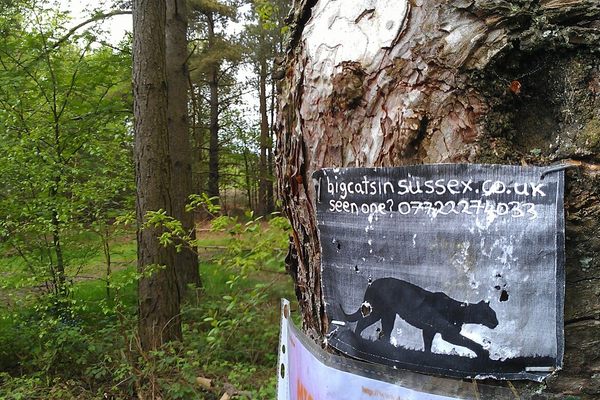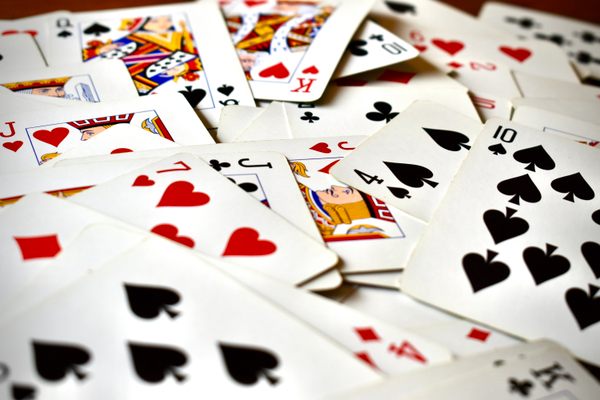How Crossword Creators Make our Favorite Word Games
We sat down with crossword editors to talk Viking words, pizza rat, and the joy of wordplay.

Brooke Husic and Natan Last, two of today’s most prolific and influential crossword constructors and editors, are similar in many ways: both are Brooklyn-based, both love the Knicks, both are (unsurprisingly) ringers at trivia nights. They’re part of the in-house constructing team for the New Yorker’s crossword puzzle, and they teach Atlas Obscura’s popular course on making crosswords, the next session of which will be held in September.
Yet they arrived at crosswords from very different paths. Last grew up on puzzles: he discovered crosswords at an early age, had his first New York Times puzzle published in high school, interned for legendary Times editor Will Shortz, and has been a pioneering constructor and educator for over a decade.
Though Husic only started constructing crosswords in 2020, she’s quickly risen to become one of the leading voices in the industry: In addition to her work as crossword editor of Puzzmo, Hearst’s games platform, she spearheads projects such as organizing charity packs and maintaining a free, data-driven wordlist to help new and experienced crossword makers improve their puzzles.
Over the past two decades, crosswords have come a long way from graph paper and pencil—now, constructors use software to help them make symmetrical grids, and they compile wordlists that help them populate the grids with their answers. I met Husic and Last through my second book Thinking Inside the Box: Adventures with Crosswords and the Puzzling People Who Can’t Live Without Them. In this interview, Last and Husic chatted about mind-bending puzzle-making experiences, what distinguishes an Atlas Obscura puzzle from other crosswords, and the relationship between the viral internet meme pizza rat and Chuck E. Cheese.

When you first got serious about crosswords, was there an important realization that cracked open how you thought about making puzzles? What takes a constructor from good to great?
BH: For me, I remember realizing that you either choose to put something in a grid or choose to not put something in a grid—that it’s always an active decision. There are a bajillion words, and a crossword has seventy-two. When you make a puzzle, I think that you should one hundred percent endorse everything you put into it. That was a quantum leap for me. Opting into everything.
NL: I remember doing a quote-based theme puzzle that had this corner of three stacked words: CHIGNON, AMPHORA, and NOSTRUM. I thought, this is wild—these beautiful-looking and mysterious-sounding words can be right next to each other in the same grid.
What makes writing an Atlas Obscura crossword distinct from other crosswords?
BH: There’s a movement among contemporary crossword constructors away from “teaching moments” that instead asserts that puzzles should be written with a solver who is familiar with the content in mind. For AO, however, I’m writing for readers and solvers who want to learn from their crossword. For example, in this AO Halloween Themeless (inserted below), I clued (spoiler alert) THORN as “Pointy-looking Anglo-Saxon rune that survived into modern Icelandic.” When I was looking up what “thorn” could mean, and found the rune, I thought, “Oh, that’s a cool angle for Atlas Obscura.”
NL: When I’m constructing a puzzle for AO, I’ll often start with the places page. For example, the Beach Hut Whale Bones in Cape Town, South Africa—an arch made out of a marine animal. I’m looking for something where the component parts are breakdown-able, to give everyone a chance. Or Profondo Rosso, a horror film store in Rome. Even though that’s a compound word in a different language, you can get the solver there who hasn’t heard of it. So part of constructing for AO is thinking about how much the solver is learning—and the fun flip side is, how much we as constructors are learning because the assignment is AO.
What’s the format of your Atlas Obscura crossword class?
BH: The class is four 90-minute sessions, and we all make a crossword together over the course of it. Natan and I really slow down the process. For example, we generate a theme as a class in the first session, and we talk about the placement of black squares for an entire class.
NL: It’s kind of like the slow food movement. By slowing down, we’re able to find answers that aren’t in our wordlists. Someone in the class suggested “IN MY DAY,” for example, which was something that neither of us had in our wordlists but is clearly a common phrase. That was really cool. At the beginning of the course, we make it clear that the puzzle we’re about to make is a newspaper-grade, saleable puzzle.
BH: We tell our class there are, roughly, four ways to make a crossword: for yourself, for your friends, for a self-published blog, or to sell to an editor. As we’re making choices about the kind of words or clues to put in, we talk about how an inside joke might be perfect for your friends, or a really trivia-heavy corner might be great for an “indie” puzzle targeted towards a specific community. A lot of this comes into play during clueing, which our class’s final session covers.

Walk us through the process of clueing.
BH: In the lecture on clueing, I say the word “evocative” about a hundred times. An evocative clue paints a picture in your mind when you read it. Often, new constructors want to write tricky and vague clues, which can be tough to make rewarding for solvers. This is because when you’re writing the clue, you’re always seeing the clue and the answer together—but when someone is solving it, they have to figure out the answer.
Can you give an example?
NL: The clue for ANGRY ORCHARD that we used is “Cider brand whose box depicts a scowling tree.” To me, that’s the perfect clue. If you like that drink, you’re going to think, nice, it’s in my crossword. But “scowling tree” is all you need to make an inference for ANGRY ORCHARD, right? It’s all there, even if you’ve never heard of it.
BH: We had so many extraordinarily fun clues for PIZZA RAT.
This is the rat that carried a whole slice of pizza down the steps of the New York City subway, yes?
BH: Exactly. A lot of the great clues included trivia that does not relate to identifying the pizza part, or the rat part. The first amazing clue was “Chuck E. Cheese.” That would work the opposite direction: if CHUCK E CHEESE was in the grid, you could clue it as “Pizza rat,” and that would be iconic. But since Chuck E. Cheese is a pizza rat, and not the pizza rat, it doesn’t work this way.
NL: Then we had “Subterranean New York slice connoisseur.” But we didn’t want a red herring. “Subterranean” makes you think of “Subway rat.” Also, is the rat a connoisseur? Has it tasted many slices? That’s an incredible image, but when we editorialize the rat, we are straying.
BH: The clue we came up with, which appears in this puzzle, ultimately was: “Rodent with a craving for Italian who became an Internet celebrity.” That clue does several things right. “Rodent” gets you rat, “craving for Italian” gets you pizza, and “who became an Internet celebrity” justifies that it’s something that you could conceivably know.
NL: One of the fun things to debate among the class is, for example, is pizza Italian? Do you ever say, “I have a craving for Italian” and mean “pizza,” or do you always mean, red sauce and pasta? Who’s to say? But also, it’s a rat. Maybe rats don’t order out.
This interview has been edited and condensed for clarity.









Follow us on Twitter to get the latest on the world's hidden wonders.
Like us on Facebook to get the latest on the world's hidden wonders.
Follow us on Twitter Like us on Facebook